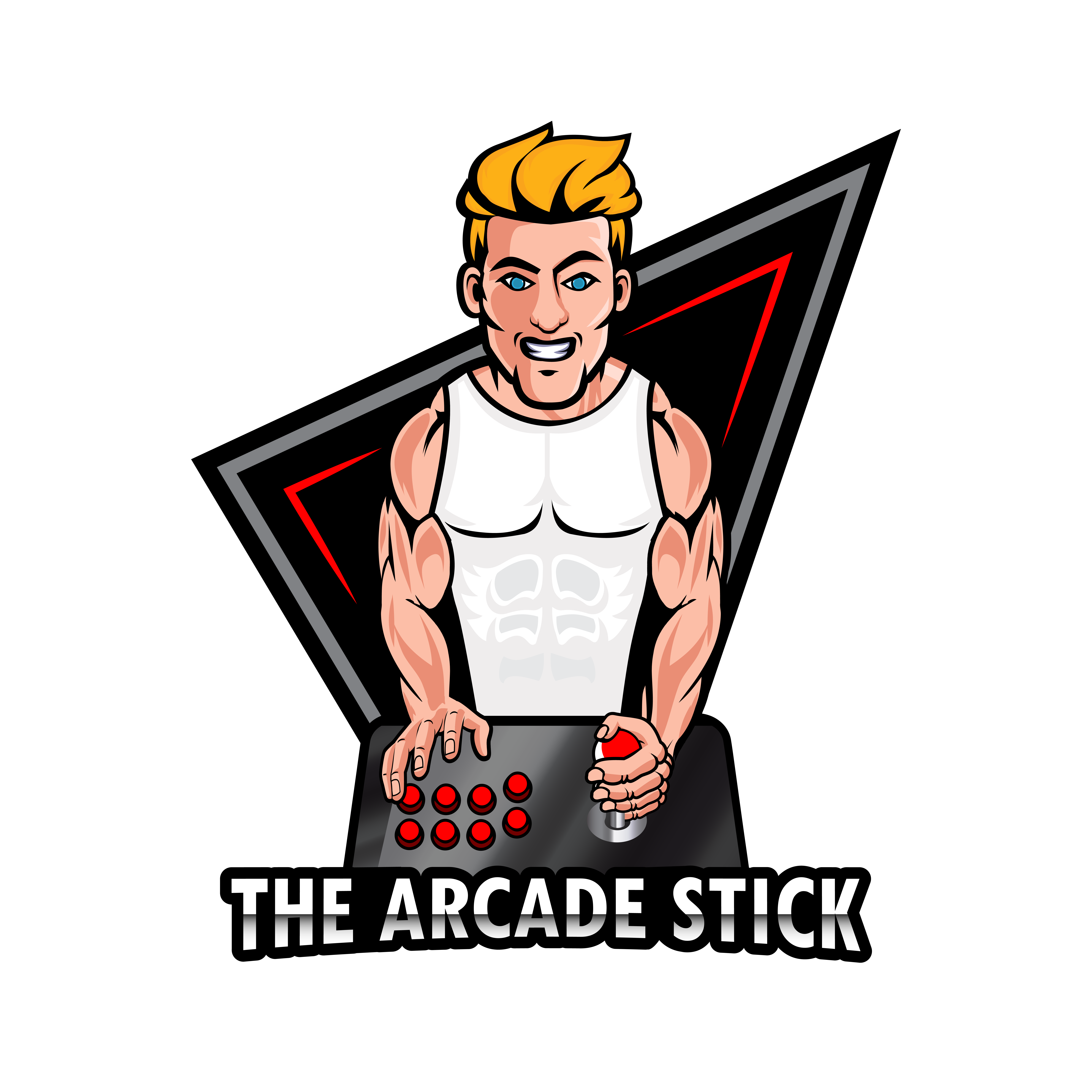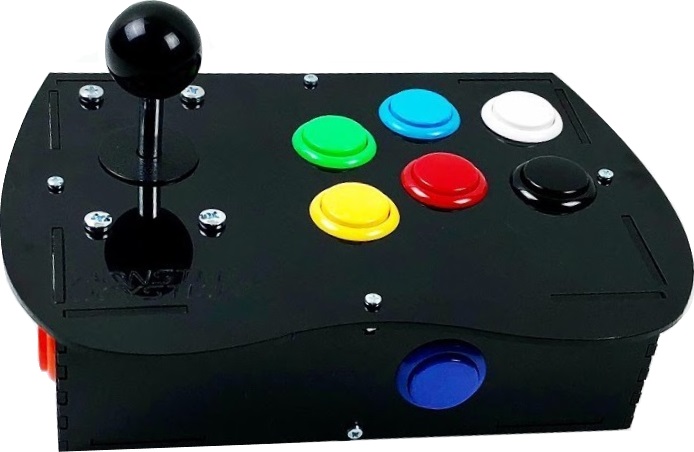| Price | Monster Joysticks |
| Release | September 24, 2017 |
| Compatibility | PC / Mac / Linux / RPi |
| Dimensions | 9.7″ x 6.5″ x 2.4″ |
| Weight | 1.48 lbs |
More from Monster Joysticks
Quick Facts
- This Deluxe Arcade Controller Kit was designed for easy assembly and durability.
- There are power, audio, ethernet, HDMI, and four USB ports.
- Included is a GPIO interface for the Raspberry Pi, a color-coded wiring loom, and all the necessary fixtures & fittings.
- The PCB was updated to a newer version that addresses more buttons if needed and has lower input latency.
Performance
The joystick is the Sanwa JLF-TP-8YT, and the buttons are the Sanwa OBSF-30. Needless to say, the performance is on point due to the high quality parts. Furthermore, the laser cut high-impact polystyrene (HIPS) shell should not dent during intense play.
Truth be told, the buttons have a bit of an usual layout, and the plenty of space between them may be jarring for you. With such a compact arcade stick, you would have probably expected a narrower button layout, right?
To get an idea about the size of the arcade stick, it is like laying two smartphones sideways next to each other. Other than that, the arcade stick has extra wings as well as wrist rests that seem to come out of the top panel.
Moving on, there is one function button on the left, right, and front. The front function button is to the right, which is consistent with the primary buttons being on the right as well. As for the side function buttons, they are closer to the front than the back, so you do not have to reach that far. Plus, you can use them for pinball games.
Now, if you would like to change the buttons, snap-in buttons should fit, but if you would like to install screw-in buttons, the two rightmost primary buttons may gave you a hard time (due to being close to the edge).
Something you can definitely do is attach the adhesive rubber feet per corner of the arcade stick. This is important because the arcade stick is not that heavy, so it may tilt as you play. For example, if you use the joystick with some force, the arcade stick may start tipping over to the left.
Hardware
Assembly only requires a screwdriver, so no soldering should be needed, but needle-nose pliers may help. The GPIO interface uses two 8-bit parallel-to-serial shift registers to send input data to the Raspberry Pi, and it is compatible with models 4, 3B+, 3, 2, B+, and A+. It is also compatible with SNESDev drivers and included in the RetroPie software suite.
The USB connection allows the V2.0 adapter to be used as a standalone interface board. Otherwise, it can be mounted onto a Raspberry Pi to use the arcade stick as a USB arcade stick even when the Raspberry Pi is not used.
You can connect multiple kits to one kit with Raspberry Pi installed or a PC/Mac/Linux for multiplayer. The adapter is available with and without a wiring harness.
Appearance
Depending on which of the many options you go for, the aesthetics of your arcade stick may be better or worse. For the most part, these arcade sticks have well made components that share a minimalistic touch.
Here is what you actually can customize: the colors of the joystick and buttons. On a side note, the four screws around the joystick can look visually unappealing.
Conclusion
Although Monster Joysticks are great, they are not high end per se, and compatibility is limited.
- Easy assembly
- Color-coded wiring
- Sanwa parts
- HIPS hardware
- Button layout
- Stability
Rating
⭐⭐⭐

